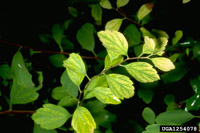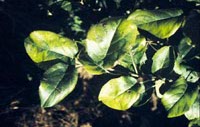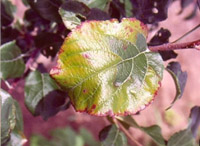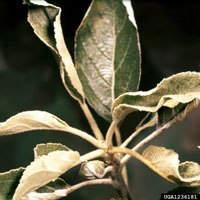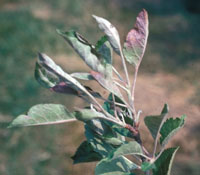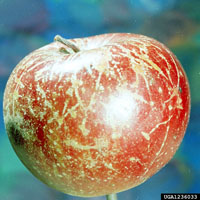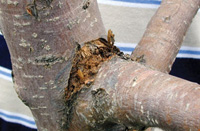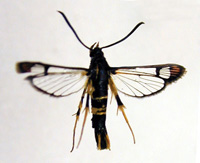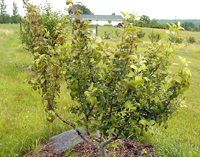Extension > Garden > Diagnose a problem > What's wrong with my plant? > Fruit > Apple > Yellowing leaves
Apples > Leaves > Yellowing leaves
1 of 4
Iron Chlorosis
- Newest leaves towards ends of branches are generally yellowed, while leaf veins remain green (interveinal chlorosis)
- More common in western Minnesota
- More information on Iron chlorosis
2 of 4
Honeycrisp Leaf Mottle Disorder
(Honeycrisp Chlorosis)
- Leaves become a mottled yellow color in mid July
- Symptoms more pronounced in trees with a heavy crop
- Does not affect fruit quality
- More information on Honeycrisp Leaf Mottle Disorder
3 of 4
Powdery Mildew
Podosphaera leucotricha
- Part or all of infected leaves are covered in white-gray, felt-like patches
- Infected leaves will curl, twist, or fold upward
- Infected blossoms are distorted, discolored, and covered in white powdery fungal growth
- Infected fruit have bronze, corky streaks, that are skin deep
- More information on Powdery Mildew
4 of 4
Dogwood Borer
Synanthedon scitula
- Larvae feed in burr knot at or below the graft union, causing girdling and reduced sap flow
- Brownish-red frass (excrement) is usually present at the feeding site
- Damage is more common on dwarf trees
- Adult is a black and yellow clear-wing moth, larvae are ½" long when mature, and white with a red-brown head
- Adult emergence begins in mid-June, peaks in early July, and continues until August
- More information on Dogwood Borer



